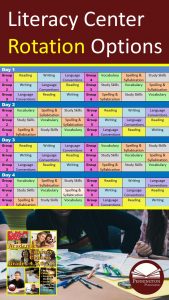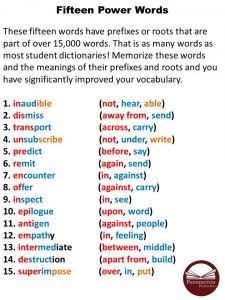Teachers have an opportunity to join key professional organizations to collaborate, advocate, and increase their levels of professional expertise.
Professional Organizations for Teachers
Founded in 1977, the American Association for Applied Linguistics (AAAL) is a professional organization of scholars who are interested in and actively contribute to the multi-disciplinary field of applied linguistics. AAAL members promote principled approaches to language-related concerns, including language education, acquisition and loss, bilingualism, discourse analysis, literacy, rhetoric and stylistics, language for special purposes, psycholinguistics, second and foreign language pedagogy, language assessment, and language policy and planning.
ACT is an independent, not-for-profit organization that provides more than a hundred assessment, research, information, and program management services in the broad areas of education and workforce development.
The American Educational Research Association (AERA) is concerned with improving the educational process by encouraging scholarly inquiry related to education and by promoting the dissemination and practical application of research results. Its 20,000 members are educators; administrators; directors of research, testing or evaluation in federal, state and local agencies; counselors; evaluators; graduate students; and behavioral scientists.
The American Evaluation Association (AEA) is an international professional association of evaluators devoted to the application and exploration of program evaluation, personnel evaluation, technology, and many other forms of evaluation. Evaluation involves assessing the strengths and weaknesses of programs, policies, personnel, products, and organizations to improve their effectiveness.
The American Library Association (ALA) is the oldest and largest library association in the world, with more than 64,000 members. Its mission is to promote the highest quality library and information services and public access to information. ALA offers professional services and publications to members and nonmembers, including online news stories.
The American Speech-Language-Hearing Association (ASHA) is the professional, scientific, and credentialing association for over 110,000 audiologists, speech-language pathologists, and speech, language, and hearing scientists. ASHA’s mission is to ensure that all people with speech, language, and hearing disorders have access to quality services to help them communicate more effectively.
The mission of the Association for Library and Information Science Education (ALISE) is to promote excellence in research, teaching, and service for library and information science education.
The Association for Supervision and Curriculum Development (ASCD) is an international, nonprofit, nonpartisan organization that represents 160,000 educators from more than 135 countries and 66 affiliates. Our members span the entire profession of educators—superintendents, supervisors, principals, teachers, professors of education, and school board members. We address all aspects of effective teaching and learning—such as professional development, educational leadership, and capacity building. ASCD offers broad, multiple perspectives—across all education professions—in reporting key policies and practices.
The California Teachers of English to Speakers of Other Languages (CATESOL) mission is to promote excellence in education for English language learners and a high quality professional environment for their teachers. CATESOL represents teachers of English language learners throughout California and Nevada, at all levels and in all learning environments. CATESOL strives to: improve teacher preparation and provide opportunities which further professional expertise, promote sound, research-based education policy and practices, increase awareness of the strengths and needs of English language learners, and promote appreciation of diverse linguistic and cultural backgrounds.
The California League of High Schools (CLHS) supports delivering relevant, standards-based instruction, meeting rigorous testing goals and proving once again that our high schools are exceptional places for students to learn and prepare for college and careers.
The California League of Middle Schools (CLMS) is committed to supporting middle grades educators and their students. A non-profit membership association, CLMS is dedicated to improving the professional knowledge of middle level educators so that early adolescents may experience academic success and personal well-being.
The California Library Association (CLA) provides leadership for the development, promotion, and improvement of library services, librarianship, and the library community. We help members excel in a fast-changing job market. We’re a resource for learning about new ideas and technology, and we actively work to influence legislation affecting libraries and librarians.
The International Dyslexia Association (IDA) is a non-profit organization dedicated to helping individuals with dyslexia, their families and the communities that support them. IDA is the oldest learning disabilities organization in the nation.
The International Literacy Association is a professional membership organization dedicated to promoting high levels of literacy for all by improving the quality of reading instruction, disseminating research and information about reading, and encouraging the lifetime reading habit. Our members include classroom teachers, reading specialists, consultants, administrators, supervisors, university faculty, researchers, psychologists, librarians, media specialists, and parents. With members and affiliates in 99 countries, our network extends to more than 300,000 people worldwide.
California Reading Association The professional membership organization of California reading and content teachers. Dedicated to improving literacy in California, this organization sponsors a wonderful annual conference.
The Linguistic Society of America (LSA) works on behalf of linguists and the discipline of linguistics, often cooperating with other scholarly societies and alerting members to issues that may concern them in their own universities or other workplaces. At the same time, LSA also addresses a wider public, offering news on linguistic findings, answering queries about language, and supporting different efforts to disseminate linguistic perspectives on language issues.
Promoting educational excellence and equity through bilingual education, the National Association for Bilingual Education (NABE) is the only national organization exclusively concerned with the education of language-minority students in American schools.
(CABE) The wonderful California membership organization for bilingual education.
The National Council for the Teachers of English (NCTE) works to advance teaching, research, and student achievement in English language arts at all scholastic levels.
(CATE)
The Teachers of English to Speakers of Other Languages, Inc. (TESOL) has approximately 14,000 members in over 120 countries, and is recognized as a non-governmental organization (NGO) of the United Nations Department of Public Information. Its mission is to ensure excellence in English language teaching to speakers of other languages. TESOL values professionalism in language education; individual language rights; accessible, high quality education; collaboration in a global community; interaction of research and reflective practice for educational improvement; and respect for diversity and multiculturalism.
The College Board is a national nonprofit membership association whose mission is to prepare, inspire, and connect students to college success and opportunity. Founded in 1900, the association is composed of more than 4,500 schools, colleges, universities, and other educational organizations. Among its best-known programs are the SAT®, the PSAT/NMSQT®, and the Advanced Placement Program® (AP®). The College Board is committed to the principles of excellence and equity, and that commitment is embodied in all of its programs, services, activities, and concerns.
The writer of this blog, Mark Pennington, is an educational author of teaching resources to differentiate instruction in the fields of reading and English-language arts.
Uncategorized
education organizations, educational organizations, teacher organizations, teacher professional organizations







